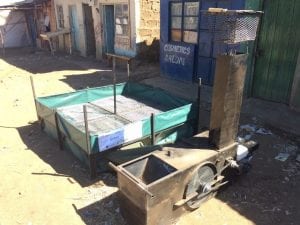
Agriculture
August 21, 2024
SAECSA Solar Food Dryer
Read SolutionImplemented by
SAECSA

Updated on February 16, 2024
·Created on October 13, 2020
Phytoponics designs and manufactures hydroponic growing systems which utilize deep water culture, meaning plant roots are fully submerged.
Phytoponics designs and manufactures deep water culture hydroponic systems. Deep water culture refers to a method of growing where plant roots are fully submerged in oxygenated water with no soil or substrate. The hydroponic systems are designed for commercial producer growers, and specifically for nutrient intensive vine crops, soft or exotic fruits, and high value crops such as medical grade cannabis. The root zone of the crops can be monitored to ensure the correct oxygen and nutrient levels. The materials used in the system are all multi-use and recyclable.
Target SDGs
SDG 2: Zero Hunger
Target Users (Target Impact Group)
Small and Medium-sized Enterprises
Distributors / Implementing Organizations
Phytoponics is contracted by commercial produce farmers in Europe to design an appropriate hydroponics system for that grower.
Regions
Europe
Countries
United Kingdom
Manufacturing/Building Method
Phytoponic systems are currently manufactured in an R&D facility in the Stockbridge Technology Centre in Yorkshire, England.
Intellectural Property Type
Patent
User Provision Model
Phytoponics is contracted by commercial produce farmers in Europe to design an appropriate hydroponics system for that grower.
Distributions to Date Status
Unknown
Design Specifications
Phytoponic systems are hydroponic growing systems that utilize deep water culture, meaning the roots of a plant are fully submerged in water without the use of any soil or substrate. Each Phytoponic system is specially designed for each client. The plant roots are submerged in a homogenous nutrient solution which can be controlled by the user to ensure the correct nutrients, pH, oxygen aeration, and temperature for the plant. These controls allow the user to introduce certain stressors to the plant to influence crop physiological traits.
Technical Support
Technical Support is provided by the manufacturer.
Replacement Components
The grow system is specially designed to suit the needs of the user.
Lifecycle
Unknown
Manufacturer Specified Performance Parameters
The manufacturer specifies their hydroponic systems are specifically designed for nutrient-intensive vine crops, soft/exotic fruits, and high-value crops. They also specify that their systems enhance the yield and quality of the produce grown in their systems and that their product is more eco-friendly than hydroponic systems that use substrate.
Vetted Performance Status
Testing performed by the manufacturer in conjunction with the European Study Group with Industry (ESGI), the University of Bath, and the University of Bristol found that the company's Hydrosac system allows for the infiltration and mixing of nutrients using inlet flow and bubble mixing.
Safety
No known safety hazards are related to this product.
Complementary Technical Systems
A power source and fertilizers are required to use this product.
Academic Research and References
Dixon, A., 2018, Optimisation of Fluid Mixing in a Hydrosac© Growing Module, ESGI 138, England.
De Bernardi, P. and Azucar, D., 2020, Innovation for Future Proofing the Food Ecosystem: Emerging Approaches, Innovation in Food Ecosystem, pp. 105-134.
Segarra, J., Jorro, J., Merloni, E., and Duarte, A., 2019, The Transformation of Citrus Waste in Bioproducts, Manual for Agricultural Vet Teachers.
Compliance with regulations
Unknown
Other Information
Phytoponics' Hydrosac design was awarded the Spark Award by the Design Council in 2017
Phytoponics Co-founder Adam Dixon was selected to become a United Nations Young Champion of the Earth in 2017.
Phytoponics secured £500,000 to scale commercial trials to manufacture
Phytoponics Testing and Optimisation of Fluid Mixing in a Hydrosac

Agriculture
August 21, 2024
Implemented by
SAECSA

Agriculture
January 20, 2025
Implemented by
UjuziKilimo Solutions

Agriculture
August 29, 2024
Implemented by
Weifang Public Machinery Co., Ltd.

Agriculture
December 26, 2023
Implemented by
Ecofrost Technologies, a subsidiary of Ecozen.

Agriculture
February 6, 2024
Implemented by
Compatible Technology International

Agriculture
August 20, 2024
Implemented by
Jain Irrigation Systems Ltd.

Agriculture
January 6, 2025
Implemented by
Microsoft

Agriculture
August 21, 2024
Implemented by
Marius Rossouw design engineer Aflastop

Agriculture
February 12, 2024
Implemented by
Naireeta Services

Agriculture
June 12, 2024
Implemented by
Delair Tech
Have thoughts on how we can improve?
Give Us Feedback